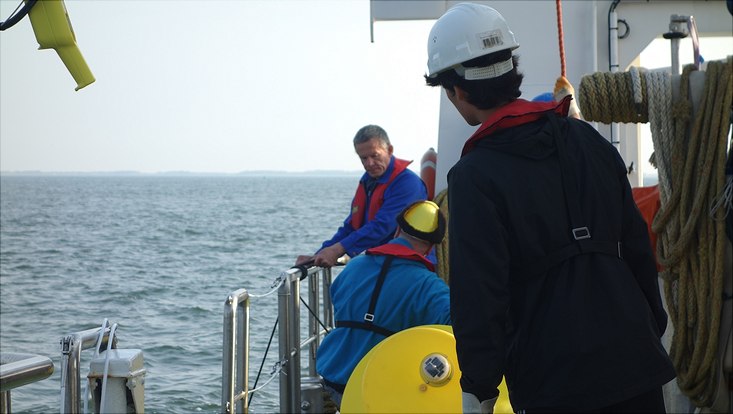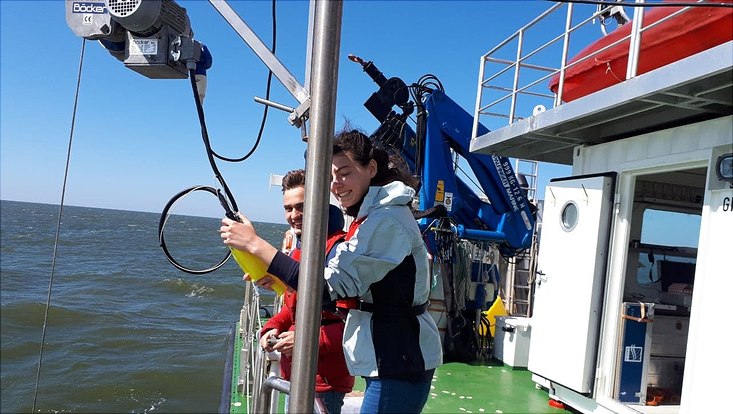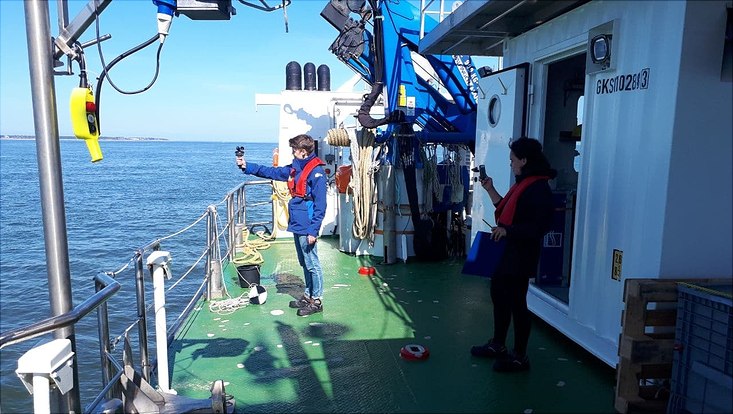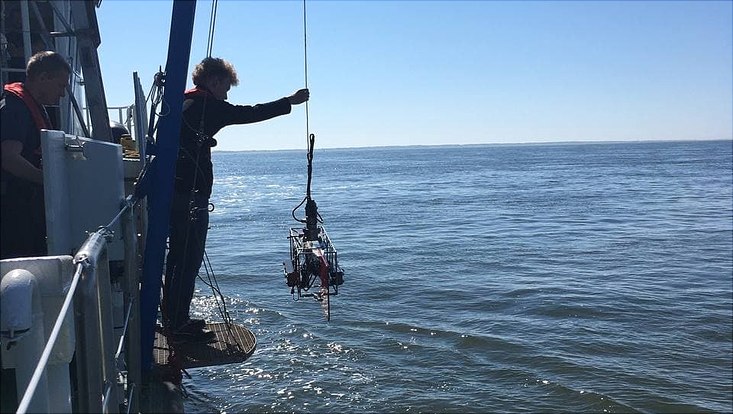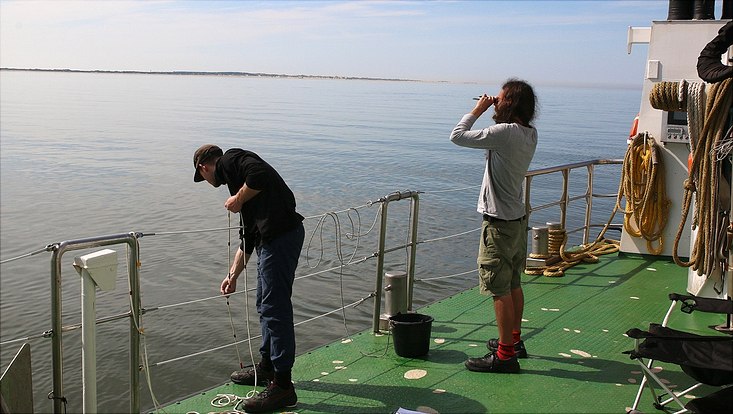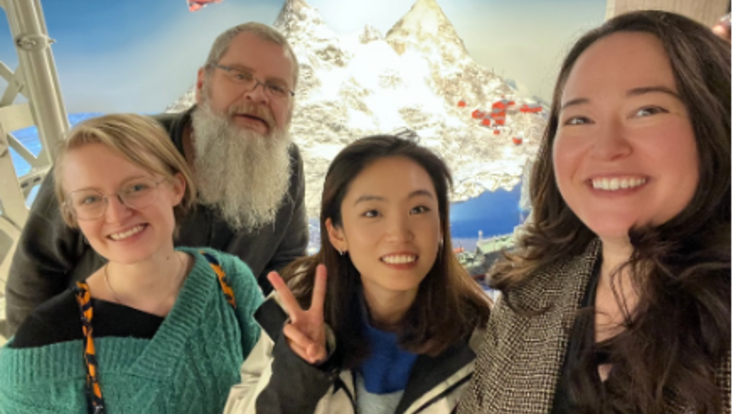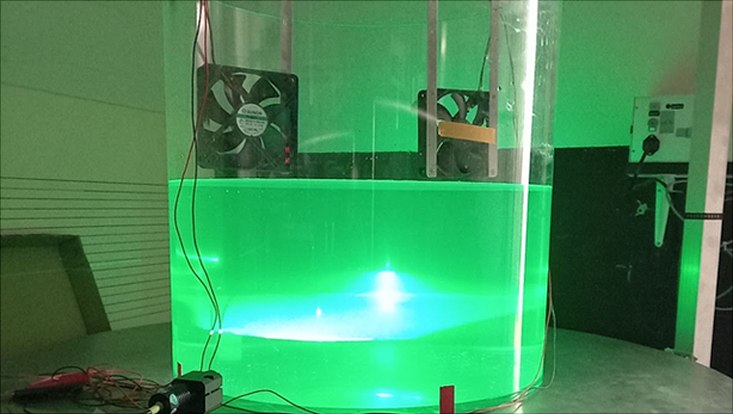Sun, sand, and SST at the seagoing course 2021
9 July 2021, by 6th semester students of (B.Sc.) Ocenaography
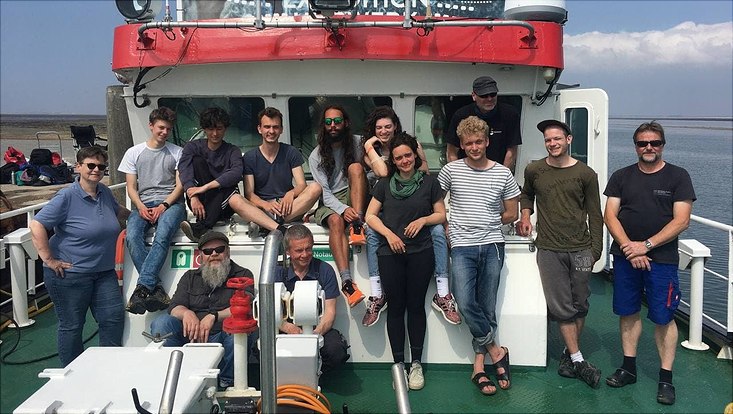
Photo: Laura Bogner
For many students of oceanography, the practical, seagoing course is the most interesting module in the bachelor's program. Since it was canceled last year because of the pandemic, the enthusiasm of us students of the 6th semester was even greater when it was decided that we would go to Amrum at the beginning of June. The students of the 4th semester and the master’s degree, who had already been there the previous week, reported about cold and storm. We had decided on the camping site as accommodation and became a little restless, but when we rolled off the ferry with our bikes, there was nothing left of the bad weather.
The next morning, the course began. On board, our lecturers Dagmar, Martin, and Andreas were awaiting us, as well as the crew of the Ludwig Prandtl, consisting of Captain Heiko and Sailor Detlev. The jetty Stenodde is located in the east of the island and in order to reach the open water, a sandbank has to be crossed, which is only possible when the water level is high. Therefore, it was necessary to cast off early. On the first day, however, heavy fog caused us to miss the time window and we were only able to set off seven hours late.
While planning, we had set three routes around Amrum where the temporal and spatial changes due to the tides were to be studied. So, during the five days of our course, we went to the Hörnumtief, the Schmaltief, and the Rüttergat. The goal was to measure temperature, salinity, and current velocity in these areas. There are different instruments, traditional and modern, for this purpose. The instruments we used ranged from the Pütz - a bucket used to bring water on board – to the ADCP, which uses sound to measure current velocities under the ship. The most important instrument was the CTD probe, which can be lowered to the bottom, measuring salinity, temperature, and pressure.
In addition, we had deployed moorings at different positions that collected data throughout the two weeks of the course. While retrieving these moorings, Heiko and Detlev were able to shine with cinematic throws with the grappling hook, to the entertainment of the assembled crew. The atmosphere on board was also very relaxed, with interesting conversations, sunny lunch breaks, and seal sightings all playing their part.
Nevertheless, there was always something to do on board, besides the measurements, protocols were written, the course was corrected and first data were evaluated. Since the ship was too small for 8 students, there was always a shore crew to evaluate the measured data and plan the trip for the next day. In addition, they were also responsible for the physical well-being in the evening, when the hungry sailors returned. During the rest of the day, we went swimming, explored the island, and especially enjoyed the weather, which held off on raining until we took the ferry towards the mainland on Sunday, tanned and full of sand.
Background
The practical, seagoing course is part of the bachelor's program in Geophysics/Oceanography. The students learn to scientifically and logistically prepare a measurement campaign, to carry out oceanographic measurements, to evaluate the obtained data, and to communicate the results in form of presentations and a report.

